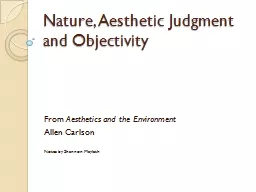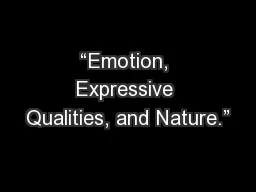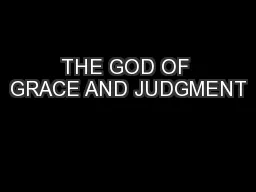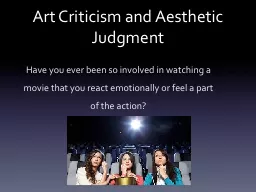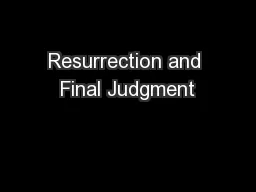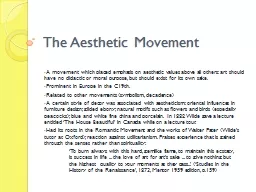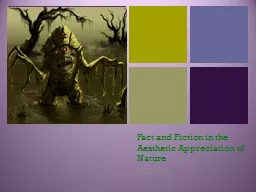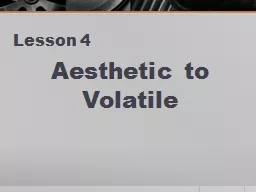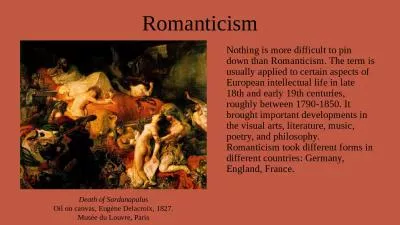PPT-Nature, Aesthetic Judgment and Objectivity
Author : faustina-dinatale | Published Date : 2017-03-16
From Aesthetics and the Environment Allen Carlson Notes by Shannon Maylath Nature and Objectivity Opposition to the view that some aesthetic judgments are objective
Presentation Embed Code
Download Presentation
Download Presentation The PPT/PDF document "Nature, Aesthetic Judgment and Objectivi..." is the property of its rightful owner. Permission is granted to download and print the materials on this website for personal, non-commercial use only, and to display it on your personal computer provided you do not modify the materials and that you retain all copyright notices contained in the materials. By downloading content from our website, you accept the terms of this agreement.
Nature, Aesthetic Judgment and Objectivity: Transcript
Download Rules Of Document
"Nature, Aesthetic Judgment and Objectivity"The content belongs to its owner. You may download and print it for personal use, without modification, and keep all copyright notices. By downloading, you agree to these terms.
Related Documents

